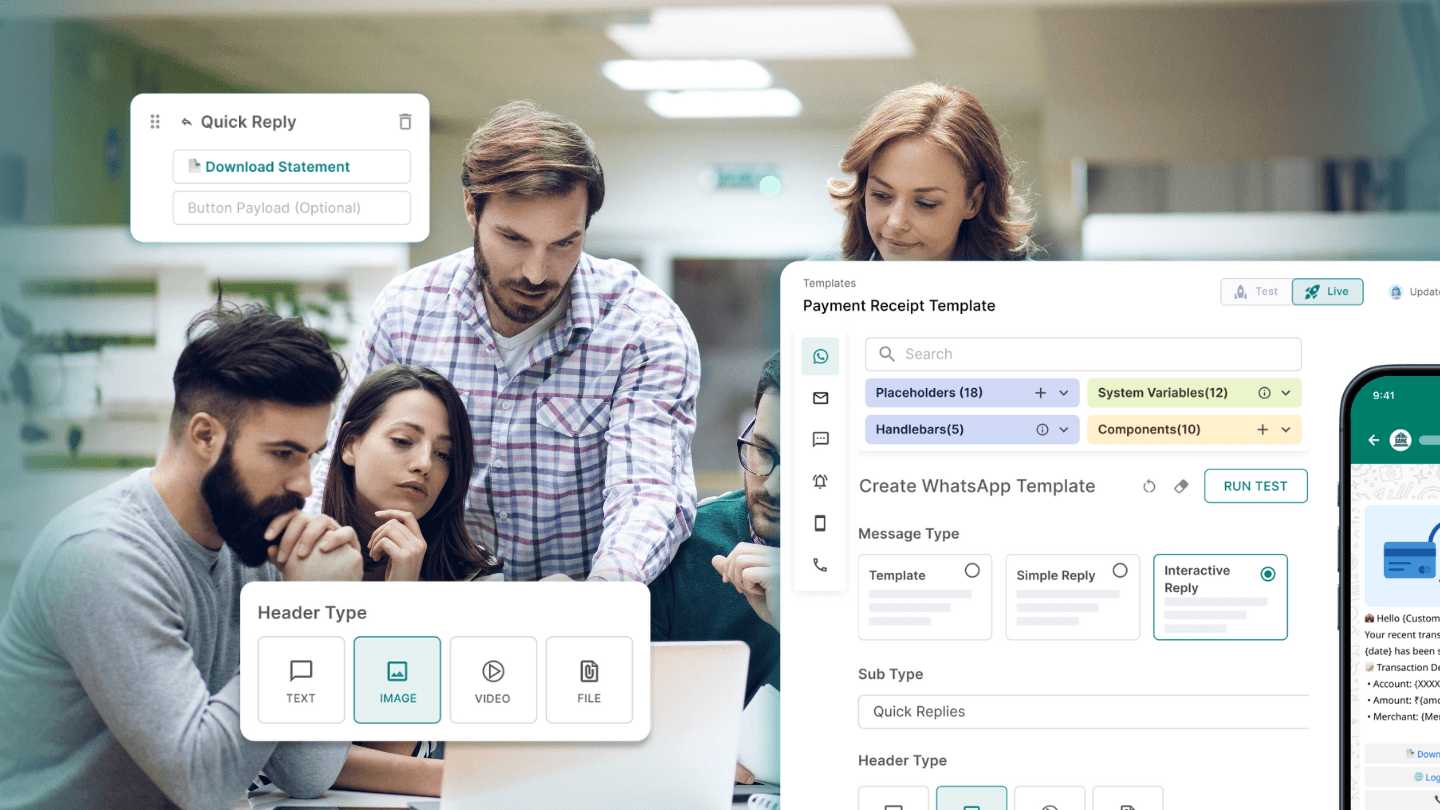Even in 2024, email remains a cornerstone of business communication, bridging the gap between businesses and customers. Transactional and marketing emails play unique roles and are pivotal in nurturing customer relationships. While transactional emails deliver critical information, such as order confirmations or password resets, marketing emails aim to engage customers through promotional content and updates.
Understanding these differences and overcoming communication barriers, such as language differences and technical difficulties, is essential for any business striving to enhance communication efficiency and effectiveness.
What is a transactional email?
Transactional emails are automated correspondences triggered by a user's actions within a service. They are characterised by necessity and timing, including shipping notifications, invoice details, and account activity alerts.
Unlike promotional emails, they are specific to an individual's actions, providing relevant and requested information.
Characteristics of transactional emails
1. Automatically activated by user actions
Transactional emails are automatically sent in response to specific user actions. This direct response ensures the information is highly relevant and timely, such as a confirmation email following an online transaction.
2. Directly linked to individual activities
These emails are tailored to individual user actions, ensuring each message is pertinent to a recipient's activity. This personal touch enhances the user's experience by providing detailed, relevant information exactly when needed.
3. No preliminary consent required
Because transactional emails are triggered by users' actions and are deemed essential for service facilitation, they do not require prior consent. This aspect distinguishes them from promotional emails that require opt-in by the recipient.
4. Exemption from unsubscribe requirements
Given their essential nature, transactional emails do not include unsubscribe links, distinguishing them from marketing communications where opt-out options are mandatory.
5. Regulatory exemptions apply
Unlike marketing emails, transactional communications are not bound by certain regulatory constraints typical of promotional materials, such as those stipulated by CAN-SPAM or GDPR. This is due to their necessity and functionality in user interactions.
6. Focused content relevance
The content of transactional emails strictly relates to user interactions or transactions, such as billing information, account updates, or security alerts. This ensures the content is both expected and relevant to the recipient.
7. Measuring engagement and effectiveness
The effectiveness of transactional emails is gauged through metrics like open rates and immediate interaction, reflecting their importance and immediate relevance to the recipients.
8. Simplified delivery protocols
Transactional emails do not generally require senders’ IP addresses whitelisted by recipients’ servers, facilitating smoother delivery and reducing potential barriers common in bulk marketing campaigns.
How to send transactional emails?
Best practices for setup and delivery
To optimise transactional email effectiveness, ensure timely delivery and clear, concise content. Employ reliable email delivery services and prioritise straightforward, actionable language. Regularly update email templates to align with current user needs and brand standards.
Compliance aspects (especially for regulated sectors)
In sectors like BFSI, compliance is critical. Ensure your emails adhere to industry regulations, such as GDPR in Europe or HIPAA in healthcare. Incorporate necessary disclaimers and user rights information, like data access and correction options.
What is a marketing email?
Marketing emails are designed to attract, engage, and convert recipients. These emails might showcase new products, special offers, or company news. Effective marketing emails captivate with compelling visuals and persuasive content, encouraging readers to explore more.
Enhancing engagement through marketing emails
Craft emails with a clear, engaging narrative and strong calls to action. Use persuasive language and eye-catching images to grab attention. Personalize content to reflect the recipient's previous interactions and preferences, enhancing relevance and engagement.
Divide your audience based on behaviours, demographics, or transaction history. Tailored messages resonate more effectively, increasing the chances of conversion. For instance, product recommendations can be sent to customers based on their purchase history or browsing behaviour.
Key differences between transactional and marketing emails
Purpose and compliance
Transactional and marketing emails serve distinct roles in business communications and are governed by different regulatory frameworks. Transactional emails are typically automated responses triggered by a user’s action, such as order confirmations or password resets. Because these emails are essential for user interactions, they don’t require prior consent under regulations like GDPR or CAN-SPAM.
On the other hand, marketing emails promote products, services, or events and require the recipient’s explicit consent before being sent. This ensures that communications are welcome and expected, reducing the risk of spam reports and enhancing the overall effectiveness of email marketing campaigns.
For example, a BFSI company might use marketing emails to inform customers about a new insurance product. In contrast, transactional emails could be sent to confirm policy changes requested by the customer.
Impact on customer relationships
How businesses use transactional and marketing emails can significantly influence customer perception and loyalty. Transactional emails, which include critical information relevant to the customer's actions, play a vital role in building trust and reliability. For instance, sending timely order confirmations and shipping notifications ensures transparency, which is crucial for customer satisfaction and retention in sectors like logistics.
In the context of email communication, the linear model represents a one-way process where messages are delivered without expecting feedback, such as in video announcements. Conversely, the transactional model allows for continuous feedback and interaction, making it ideal for enhancing customer satisfaction.
Conversely, marketing emails aim to deepen customer relationships by offering personalised content, deals, and insights that align with the user's interests and behaviours. When done effectively, marketing emails can turn a one-time buyer into a repeat customer, fostering long-term loyalty.
For instance, a logistics company might use marketing emails to inform customers about a loyalty program that rewards frequent shipments, thus encouraging ongoing engagement.
Examples of transactional emails
Purchase confirmation or receipt: Confirms transaction details immediately after purchase to ensure transparency and build trust.
Order confirmations & billing updates: Details of the items, quantities ordered, and any necessary billing updates.
Request for feedback: Seek customer feedback post-interaction to improve service quality, especially relevant to BFSI and logistics.
Identity verification: Ensures security by verifying user identity during sensitive account actions or setups.
Password reset: Provides secure instructions to send password reset links in response to user requests.
Account notifications: Alerts users about important activities and changes related to their account security and settings.
Registration and double opt-in: To comply with data protection regulations, we confirm user consent through a double opt-in during registration.
Fyno's role in managing email communications
Fyno serves as a key enabler in refining transactional and marketing email strategies for businesses, processing over 200 million monthly notifications.
Enhancing email templates
Fyno's rich email template editor also facilitates creating and managing dynamic transactional and marketing email templates and campaigns.
Features for impactful emails: With tools that support crafting engaging email templates, Fyno helps maintain brand consistency across communications. The components feature introduces reusable components like headers, footers, and social media icons, simplifying email design and ensuring uniformity in email appearance.
Key benefits of the components F\feature:
Efficient brand management: It allows the creation and storing of multiple components tailored for different brands, ensuring consistency across communications.
Consistent look and feel: This feature maintains a uniform appearance across all emails, enhancing the professional appeal of your communications.
Seamless integration and dynamic content: Components are easily integrated into the email editor, simplifying the design process. Custom handlebar functions enable dynamic content adjustments, such as personalised greetings that adapt based on the available recipients' data.
Why use both transactional and marketing emails?
Both transactional and marketing emails play pivotal roles but for different strategic reasons. It is important to distinguish between marketing and transactional email to enhance delivery rates and compliance with service provider recommendations.
Transactional Emails: These are not just routine communications. When a customer completes a purchase, updates their account, or requests a password reset, they expect an immediate and direct email response.
For instance, Fyno’s integration with banking services has enabled financial institutions to automate such communications, ensuring instant updates about account activities which is crucial for maintaining transparency and trust.
Marketing Emails: Far from being mere promotional tools, these emails are essential for nurturing customer relationships over time. They provide updates on new services, special promotions, or insightful content relevant to customers’ interests.
Integrating transactional and marketing strategies
Streamlined customer interactions: Integrating transactional details within marketing narratives can reinforce communication. For example, an order confirmation email (transactional) that also suggests related products (marketing) can enhance the customer experience without overwhelming them with multiple emails.
Boosted open rates: Transactional emails typically have higher open rates due to their necessity. Including marketing messages in these emails can increase exposure to promotional content, leveraging the high engagement of transactional messages to boost marketing efforts.
Detailed personalisation: Businesses can tailor marketing emails more effectively by analysing the interactions within transactional emails. This dual approach meets the customer's immediate needs and personalises future communications, where personalised, timely updates directly correlate with customer retention and satisfaction.
Cost efficiency: Sending a single, well-structured email that serves both transactional and marketing purposes can reduce costs associated with sending multiple communications. Furthermore, this strategy simplifies the email management process, making it easier to maintain consistency and track the effectiveness of email campaigns.
AMP emails: Integrating Accelerated Mobile Pages (AMP) into emails allows for interactive and dynamic content. Customers can interact with content directly within the email, like filling out forms or browsing products, dramatically enhancing user engagement and satisfaction.
Conclusion
Choosing the right balance and integrating transactional and marketing emails can significantly influence a business’s communication effectiveness. With 74% of customers expecting immediate transactional notifications post-purchase and marketing emails generating an impressive ROI of 4200%, as reported by the DMA, the strategic use of these emails can enhance customer experience and contribute to substantial business growth.
FAQs
1. What is the main difference between transactional and marketing emails?
Transactional emails are triggered by specific user actions, such as order confirmations or password resets, and are essential for service facilitation. Marketing emails, on the other hand, are designed to promote products or services and require explicit consent from the recipient.
2. Do I need consent to send transactional emails?
No, transactional emails do not require prior consent. They are sent in response to specific user actions and are necessary for service delivery, such as confirming a purchase or resetting a password.
3. Can I include promotional content in a transactional email?
Yes, but it should be minimal and not overshadow the primary purpose of the transactional email. Including relevant promotional content can enhance engagement without violating the transactional nature of the email.
4. Why are unsubscribe links not required in transactional emails?
Transactional emails are considered essential communications related to a user's actions, so unlike marketing emails, they are exempt from the requirement to include an unsubscribe link.
5. What metrics should I use to measure the effectiveness of transactional emails?
Key metrics for transactional emails include open rates, click-through rates, and immediate interaction rates. These metrics reflect the relevance and timeliness of the email content to the recipient.
6. Can transactional and marketing emails be integrated into a single email?
Yes, businesses can combine transactional details with marketing content to enhance the user experience and reduce the number of emails sent. For example, an order confirmation email might include related product suggestions.
7. Are there any regulations governing the sending of marketing emails?
Yes, marketing emails must comply with regulations such as GDPR and CAN-SPAM, which require explicit consent from recipients and provide options for unsubscribing from future communications.


